近年、日本でも注目を集めているレッジョエミリア教育。この教育アプローチは、子ども一人ひとりの「興味」や「好奇心」を引き出し、そこから学びを広げていくことを目的としています。家庭で実践することも可能で、子どもの成長に大きな影響を与えます。本記事では、レッジョエミリア教育の基本的な考え方と、家庭でどのように子どもの興味を引き出せるのか、その具体的な方法について解説します。
レッジョエミリア教育とは?
レッジョエミリア教育は、イタリアのレッジョエミリアという町で始まった幼児教育の哲学です。その特徴は、子どもを「主体的な学び手」として尊重し、教師や親がその学びをサポートする「共同体」としての役割を担う点にあります。この教育では、以下のような考え方が重視されます。
- 子どもの声を聞くこと
子どもは多様な方法で自分の考えを表現します。言葉だけでなく、絵、工作、音楽など、さまざまな「言語」で自分を表現することが認められます。 - 環境は「第3の教師」
子どもが自然に学びたくなるような環境を整えることが重要です。 - プロジェクト型学習
子どもの興味に基づき、長期的なプロジェクトを通じて学びを深めます。
子どもの興味を引き出す具体的な方法
では、家庭でどのようにレッジョエミリア教育を取り入れ、子どもの興味を引き出せるのか、具体的なステップをご紹介します。
1. 子どもの観察を徹底する
まずは、子どもが何に興味を持っているのかを理解することが重要です。子どもは日常の中で多くのことに目を輝かせています。その小さな「興味の種」を見逃さないように、次のようなポイントを観察しましょう。
- どんなおもちゃで長時間遊んでいるか
- 散歩中に立ち止まる場所やもの
- よくする質問や話題
2. 興味に応じた環境を用意する
子どもの興味が分かったら、それを深めるための環境を整えます。レッジョエミリア教育では「環境が教師」とされるように、家の中を子どもの興味を引き出す工夫で満たしましょう。
- 自然への興味がある場合
小さな植物を育てたり、虫かごを用意して観察させたりする。 - 工作が好きな場合
色とりどりの紙、のり、はさみ、画用紙などを自由に使える場所を作る。 - 機械や構造物に興味がある場合
レゴやブロック、工具のおもちゃなどを与える。
3. 質問を投げかけ、対話を楽しむ
子どもの興味を深めるには、大人からの「問いかけ」も重要です。レッジョエミリア教育では、子どもの考えを引き出すようなオープンな質問が効果的だとされています。
良い質問例
- 「このお花はどうしてここで咲いていると思う?」
- 「この絵は何を描いているの?教えてくれる?」
- 「このおもちゃを使って何を作りたい?」
子どもが答えることで、さらに学びが広がり、新たな疑問が生まれるサイクルを生み出せます。
4. プロジェクトを提案する
レッジョエミリア教育の大きな特徴であるプロジェクト型学習を家庭でも取り入れましょう。例えば、以下のような活動を通じて、子どもの興味を深められます。
- 植物が好きな子ども向け
「家庭菜園プロジェクト」を立ち上げ、一緒に野菜を育てる。種をまき、成長を観察し、収穫するプロセスを楽しむ。 - 動物に興味がある子ども向け
「近所の動物観察プロジェクト」を実施し、鳥や昆虫、犬の行動を観察して記録する。 - ものづくりが好きな子ども向け
「家族で作る巨大工作プロジェクト」として、段ボールを使った家や乗り物を作る。
5. 成果を共有し、褒める
子どもの活動を家族全員で共有し、その努力や成果を認めることで、次への意欲が高まります。レッジョエミリア教育では、子どもの学びの成果を記録することも重視されています。家庭では次のような形で実践できます。
- 子どもの作品を壁に飾る
- 写真や動画を撮ってアルバムを作る
- 子どもが学んだことを話す場を設ける
実践の際の注意点
1. 大人が主導しすぎない
子どもの興味を尊重することが最優先です。大人がテーマを決めてしまうのではなく、子どものペースに合わせることを意識しましょう。
2. 失敗を恐れない雰囲気を作る
子どもは試行錯誤を通じて多くを学びます。失敗しても「それも学びの一つだね」とポジティブに受け止めてあげましょう。
3. 継続的な観察と柔軟性を保つ
子どもの興味は変化していきます。常に観察を続け、新しい興味に対応できるように環境やプロジェクトを調整しましょう。
終わりに
レッジョエミリア教育の理念は、子どもの「主体性」と「創造性」を尊重する点で、家庭での実践にも大いに活用できます。子どもが持つ無限の可能性を引き出すためには、親の観察力とサポートが欠かせません。本記事で紹介した方法をぜひ日々の子育てに取り入れ、子どもと一緒に成長を楽しんでください。
“How to Spark Your Child’s Interest Using the Reggio Emilia Approach”
In recent years, the Reggio Emilia approach has garnered attention in Japan as an innovative philosophy in early childhood education. This method focuses on drawing out each child’s unique “interest” and “curiosity,” fostering deep and meaningful learning experiences. The approach is not limited to classrooms—it can also be effectively practiced at home, creating a significant impact on a child’s development. In this article, we will explore the foundational concepts of the Reggio Emilia approach and provide practical strategies for sparking your child’s interest at home.
What is the Reggio Emilia Approach?
The Reggio Emilia approach originated in the town of Reggio Emilia, Italy. It is characterized by its deep respect for children as active learners and the belief that educators and parents form a “community” to support their growth. Key principles of the Reggio Emilia approach include:
- Listening to the Child’s Voice
Children express themselves in countless ways. Beyond spoken language, they communicate through art, crafts, music, and other creative “languages.” - The Environment as the “Third Teacher”
Creating an environment that naturally encourages learning is essential. - Project-Based Learning
Long-term projects driven by the child’s interests help deepen their understanding.
Practical Strategies to Spark Your Child’s Interest
So, how can you apply the Reggio Emilia approach at home to spark your child’s curiosity? Here are some actionable steps:
1. Observe Your Child Closely
The first step is to understand what truly captures your child’s attention. Children are naturally curious about many things in their daily lives. By observing their behavior, you can identify the “seeds of interest” that lead to meaningful learning opportunities. Pay attention to:
- Which toys they play with for extended periods
- What they stop to examine during walks
- The questions they frequently ask or topics they bring up
2. Create an Environment That Supports Their Interests
Once you’ve identified your child’s interests, design an environment that encourages them to explore further. The Reggio Emilia philosophy emphasizes that “the environment is a teacher,” so tailor your home to inspire curiosity.
- For nature enthusiasts:
Provide opportunities to grow plants or observe insects with a small garden or bug jar. - For budding artists:
Set up a space with colorful papers, glue, scissors, and sketchbooks for creative expression. - For those fascinated by structures or machines:
Offer building blocks, LEGO sets, or simple mechanical toys.
3. Ask Open-Ended Questions and Engage in Dialogue
Deepening your child’s interests often involves asking thought-provoking questions. In the Reggio Emilia approach, open-ended questions help children think critically and articulate their thoughts.
Examples of Effective Questions
- “Why do you think this flower grows here?”
- “What are you drawing? Can you tell me about it?”
- “What do you want to build with this toy?”
As children respond, they develop their ideas further, creating a cycle of learning and discovery.
4. Propose Projects
Introduce project-based learning into your home, a hallmark of the Reggio Emilia approach. Projects provide a structured yet flexible way to expand on your child’s curiosity. Examples include:
- For children interested in plants:
Start a “Home Garden Project” where you grow vegetables together, observe their growth, and enjoy the harvest. - For animal lovers:
Begin a “Neighborhood Wildlife Project” by observing and recording the behavior of birds, insects, or local pets. - For creative builders:
Collaborate on a “Family Craft Project,” such as constructing a house or vehicle out of cardboard.
5. Celebrate Achievements and Provide Encouragement
Share and celebrate your child’s work with the whole family. Acknowledging their efforts and results boosts confidence and motivation. The Reggio Emilia approach emphasizes documenting learning outcomes, which you can apply at home by:
- Displaying their artwork on walls
- Creating photo albums or videos to record their projects
- Encouraging them to share their learning during family discussions
Points to Keep in Mind
1. Avoid Overstepping as a Parent
Always prioritize your child’s interests. Avoid deciding themes or projects for them—let their natural curiosity guide the way.
2. Create a Safe Space for Trial and Error
Children learn a lot through experimentation and mistakes. Encourage them by saying, “Mistakes are part of learning,” and provide a supportive atmosphere.
3. Remain Flexible and Observant
Children’s interests evolve over time. Continue observing them and adjust the environment or projects to match their changing passions.
Conclusion
The Reggio Emilia approach, with its emphasis on respecting children’s “autonomy” and “creativity,” can be seamlessly integrated into your parenting. Unlocking a child’s limitless potential requires a parent’s keen observation and support. Try incorporating the strategies shared in this article into your daily routines and enjoy growing and learning alongside your child.




コメント